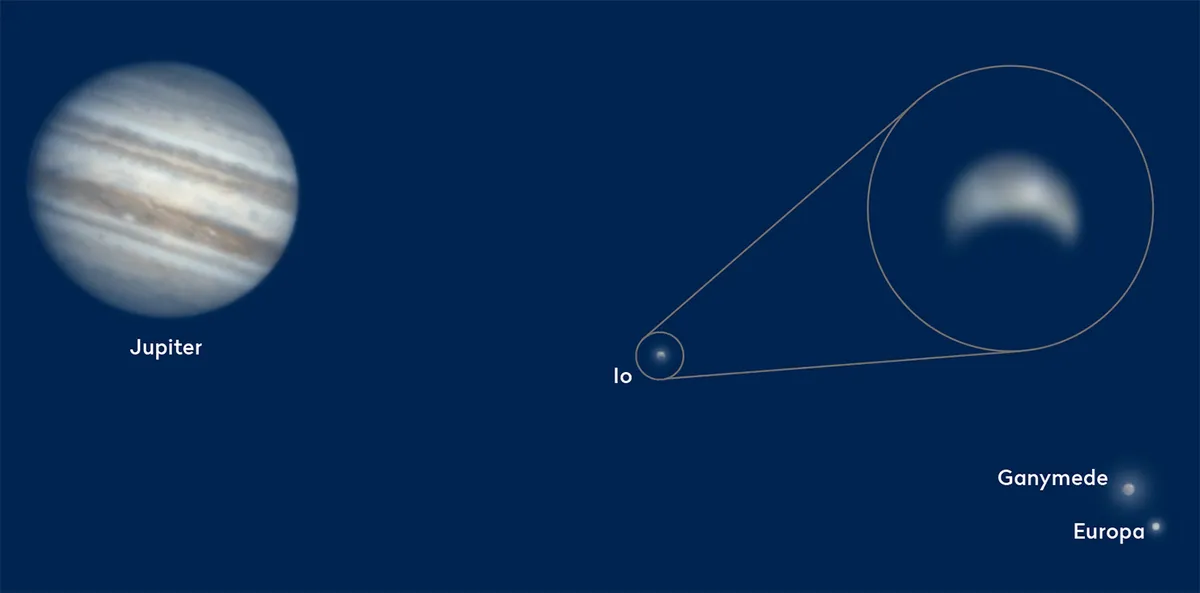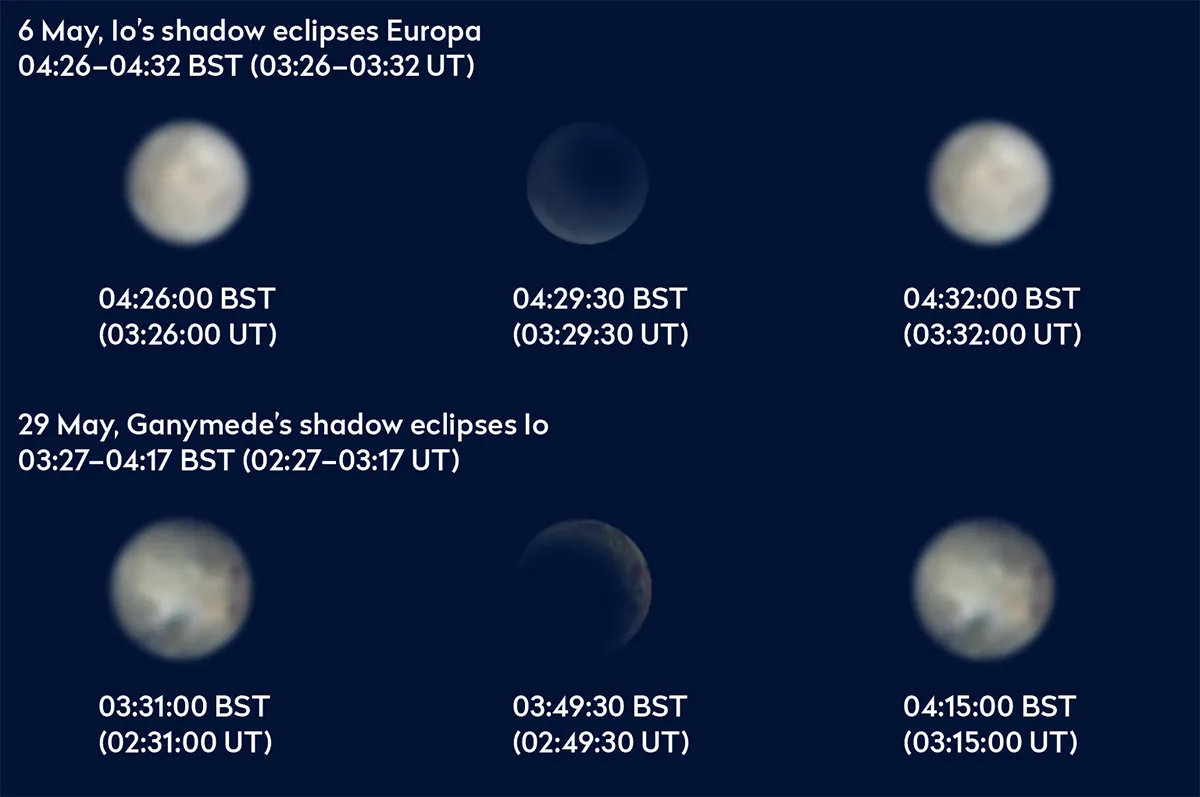Jupiter reaches equinox on 2 May 2021, a position where the geometric centre of the Sun’s disc appears to cross the equatorial plane of the planet.
Compared to Earth, Jupiter’s axial tilt is quite small; 3.3˚ compared to our planet’s 23.4˚. For this reason, seasonal variations on Jupiter are relatively minor.
Of more significance from our perspective, the four Galilean moons Io, Europa, Ganymede and Callisto, have orbits only slightly inclined to Jupiter’s equatorial plane.
For more, read our guide on how to observe the planets in 2021.

At those times away from an equinox, if the orbits of these moons were directly visible, from the Sun they would appear like narrow ellipses.
Near to a solstice – a position where one of the planet’s poles points maximally towards the Sun – the orbit ellipses would appear to have maximum width.
Near a Jovian solstice, the edges of the orbital ellipses would all intersect Jupiter’s disc, with the exception of Callisto’s.
However, near to a Jovian equinox, all of the ellipses would appear so narrow from the perspective of the Sun that they would be lines representing the moon orbits seen edge on.
From Earth this creates interesting opportunities, as our view of the orbital ellipses isn’t that different to the Sun’s.
Mutual events of Jupiter's moons

Near a Jupiter equinox we see the gas giant's Galilean moons shuffling back and forth either side of the planet in an almost straight line.
The alignment relative to the Sun allows the shadows of each moon to interact with other moons. Around a Jovian eclipse it’s possible to witness moon-moon transits, occultations and eclipses – which are collectively known as mutual events.
- 6 May: Io’s shadow eclipses Europa from 04:26-04:32 BST (03:26-03:32 UT).
- 14 May: Ganymede’s shadoweclipses Io between 04:43-04:53 BST (03:43-03:53 UT).
- 29 May: Ganymede’s shadow takes another swipe at Io and covers the majority of Io’s disc, from 03:27-04:17 BST (02:27-03:17 UT).
The visibility of these events varies depending on where Jupiter is in the sky.
The event on 6 May occurs under brightening sky conditions with Jupiter just 8˚ above the southeast horizon.
The 14 May event fares a little better in terms of altitude, Jupiter appearing 13˚ above the southeast horizon by the time it starts.
The event on 29 May occurs with Jupiter 11˚ up under lightening dawn twilight skies.
Pete Lawrence is an experienced astronomer and a co-host of The Sky at Night. This guide originally appeared in the May 2021 issue of BBC Sky at Night Magazine.

